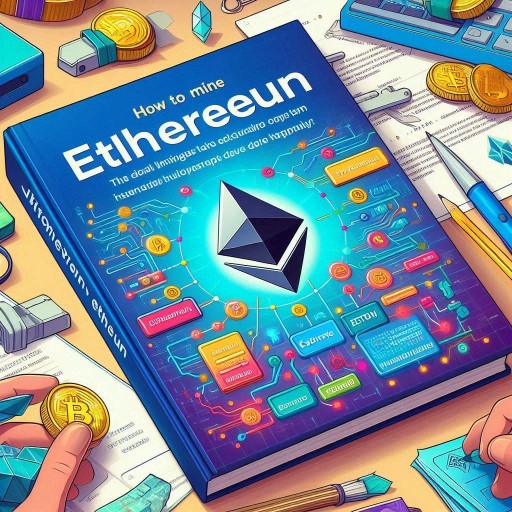
Mining Ethereum has become one of the popular ways to profit from the cryptocurrency world. Although complex, mining Ethereum can be a profitable activity if done correctly. This article will cover the steps from preparation to the execution process of mining Ethereum, as well as some examples of success in this area.
What is Ethereum Mining?
Ethereum mining is the process of using computing power to complete the complex mathematical calculations required to verify transactions on the Ethereum network. Miners who successfully verify transactions are rewarded with Ethereum tokens (ETH). In 2024, although Ethereum has moved to a Proof of Stake (PoS) mechanism with Ethereum 2.0, there are still ways to participate in the network by mining Ethereum on some other compatible blockchain or Ethereum-based coin.
Read more: Blockchain and Cryptocurrency: The Future of Digital Finance
Ethereum Mining Preparation Stage
Setting Up Hardware
To mine Ethereum effectively, you need powerful hardware. Here are some of the hardware you need to prepare:
- GPU (Graphics Processing Unit): Mining Ethereum requires a powerful GPU. Some popular choices include the NVIDIA GeForce RTX 3080 and AMD Radeon RX 6800 XT. These graphics cards are known for their high performance in crypto mining.
- Motherboard: Choose a motherboard that supports multiple GPUs, such as the ASUS B250 Mining Expert or MSI Z170A Gaming Pro Carbon.
- PSU (Power Supply Unit): A reliable PSU is essential to ensure your system runs stable. Make sure you choose a PSU with enough power to support all the GPUs you use.
- RAM and Storage: While not as important as the GPU, make sure you have at least 8GB of RAM and SSD storage to speed up the mining process.
Setting Up Software
Apart from hardware, you also need the right software to start mining Ethereum.
- Operating System: Many miners choose to use Windows 10/11 or a Linux distribution like Ubuntu. Both support crypto mining software well.
- Mining Software: Choose mining software that suits your GPU. Examples of popular software are Claymore Miner, PhoenixMiner, and Gminer.
- Ethereum Wallet: Before you start mining, you need an Ethereum wallet to store your mining results. Wallets like MetaMask or Trust Wallet are secure and easy-to-use options.
Join a Mining Pool
Joining a mining pool is an important step to increase your chances of getting rewards. A mining pool is a collection of miners who work together to mine blocks, and the rewards are shared among all members of the pool. Some of the well-known Ethereum mining pools are Ethermine, SparkPool, and F2Pool.
Read more: Technology Revolution in 2025
Ethereum Mining Execution Process
Once all the preparations are done, you are ready to start the Ethereum mining process.
Configuring the Mining Software
The first step in the execution process is to configure your mining software. Follow these steps:
- – Download and Install Mining Software: Download the mining software you have chosen. Make sure you download from an authorized source to avoid malware.
- – Configure Mining Settings: Once the software is installed, open the configuration file (usually a .bat file) and enter details such as your Ethereum wallet address and the address of your chosen mining pool. An example configuration for PhoenixMiner might look like this:
PhoenixMiner.exe -pool eth.pool.minergate.com:45791 -wal YOUR_WALLET_ADDRESS -worker rig1
- Optimize GPU Settings: Before starting mining, make sure to optimize your GPU settings. Use software like MSI Afterburner to adjust clock speed and voltage, ensuring that the GPU is running at optimal performance without overheating.
Starting the Mining Process
Once the configuration is complete, you can start the mining process by running the mining software. Here are some things to note:
- Monitoring and Maintenance: Once mining starts, make sure you keep monitoring the GPU temperature and overall system performance. Too high a temperature can damage your hardware, so make sure the cooling system is working properly.
- Payouts and Results: Periodically check your mining pool to see how much Ethereum you’ve earned. Usually, mining pools will automatically send you a payout once you reach a certain threshold.
Examples of Success in Ethereum Mining
Some miners have managed to earn significant profits from mining Ethereum. For example:
- Solo Miners in Canada: A solo miner in Canada reportedly managed to mine a block of Ethereum in early 2022, which rewarded him with more than 6 ETH at a time. This shows that with powerful hardware and the right configuration, the opportunity for large rewards still exists.
- Mining Farms in Iceland: Iceland is becoming one of the popular countries for crypto mining thanks to its low electricity costs and ideal cold temperatures to keep GPUs cool. Many large mining farms in Iceland use renewable energy, showing that Ethereum mining can be sustainable and environmentally friendly.
Conclusion
Mining Ethereum in 2024 remains an attractive activity for many people looking to profit from cryptocurrency. With proper hardware and software preparation, as well as a good understanding of the mining process, you can begin your Ethereum mining journey with more confidence. While challenges exist, the opportunities for success are still wide open, as many miners around the world have proven. Happy mining!
